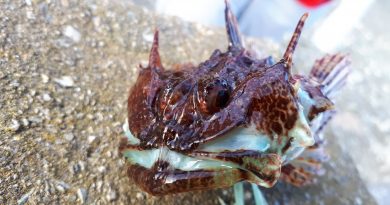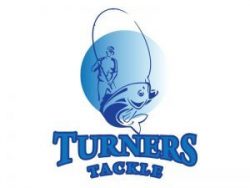Rockling
The Rockling (Gaidropsarus spp.), a lesser-known but intriguing denizen of the coastal waters surrounding the United Kingdom, adds a touch of mystery to the underwater landscapes. With its slender form and tenacious presence, the rockling represents a fascinating subject for anglers and marine enthusiasts alike. In this article, we’ll embark on a journey to uncover the secrets of the rockling, exploring its habitat preferences, preferred prey, and distinctive characteristics that make it a noteworthy species in UK waters.
Habitat of the Rockling:
1. Rocky Seabeds and Coastal Environments:
- True to its name, the rockling is often associated with rocky seabeds and coastal environments. It thrives in areas featuring rocky outcrops, crevices, and structures that provide ideal hiding spots and ambush points for hunting.
2. Depth Range:
- Rocklings exhibit versatility in their depth preferences. While they can be found in shallow waters close to the shore, they also inhabit deeper offshore areas, including rocky reefs and underwater formations.
3. Substrate Preferences:
- The rockling favors substrates with rocky features, where it can blend seamlessly with its surroundings. The ability to navigate through rock crevices and structures is crucial for both protection and ambushing prey.
4. Nearshore Habitats:
- Many rockling species are commonly found in nearshore habitats, making them accessible to shore anglers. Their presence in these areas adds an interesting dimension to coastal angling.
Prey Preferences of the Rockling:
1. Small Fish:
- Rocklings are opportunistic predators, often preying on small fish that inhabit the rocky environments they frequent. Agile and quick, they can chase down and capture smaller fish as part of their diet.
2. Crustaceans:
- Crustaceans, including crabs and shrimp, are a staple in the rockling’s diet. Their ability to forage among rocky substrates allows them to access crustacean hiding places and secure a reliable food source.
3. Mollusks and Invertebrates:
- Rocklings also target mollusks such as small clams and various marine invertebrates. Their slender bodies and maneuverability aid in navigating tight spaces to capture these elusive prey items.
4. Worms and Larvae:
- Worms, larvae, and other small invertebrates form another component of the rockling’s diet. Their ability to explore the rocky nooks and crannies allows them to find and consume a variety of these smaller organisms.
Distinctive Traits of the Rockling:
Rockling species exhibit a range of sizes, with some individuals reaching lengths of up to 30 inches (76 cm). The three main species found in UK waters are the 5-bearded rockling (Ciliata mustela), the 3-bearded rockling (Gaidropsarus vulgaris), and the shore rockling (Gaidropsarus mediterraneus). Each species has its own distinct size range, with the 5-bearded rockling typically growing larger than the others.
1. Elongated and Slender Body:
- The rockling is characterized by its elongated and slender body, which aids in navigating through rocky environments. This streamlined form allows for efficient movement and access to narrow spaces.
2. Dorsal Fin Placement:
- The dorsal fin of the rockling is located far back on its body, contributing to its distinctive appearance. This fin positioning, along with its long anal fin, enhances stability and maneuverability.
3. Camouflage and Coloration:
- Rocklings often exhibit coloration that provides effective camouflage in their rocky habitats. Shades of brown, green, or gray help them blend into the substrate, offering protection from predators and aiding in ambushes.
4. Feeding Behavior:
- Rocklings utilize a sit-and-wait feeding strategy, patiently positioning themselves among rocks and structures before ambushing passing prey. This behavior requires both patience and precision.
5. Reproductive Strategies:
- Rocklings employ various reproductive strategies, with some species laying eggs on rocky surfaces. The ability to choose suitable breeding sites among the rocks contributes to the survival of the next generation.
Conservation Considerations:
Understanding the habitat, prey preferences, and unique traits of the rockling is vital for its conservation. Anglers and marine enthusiasts can contribute to the protection of this species by:
- Practicing Responsible Catch-and-Release:
- Engaging in catch-and-release practices, especially for larger rocklings, promotes the conservation of populations and allows individuals to contribute to breeding.
- Protecting Rocky Habitats:
- Supporting initiatives focused on the protection and conservation of rocky habitats ensures the availability of suitable environments for rocklings to thrive.
- Promoting Sustainable Angling Practices:
- Educating anglers about sustainable angling practices, including the proper handling of rocklings and adherence to fishing regulations, fosters a conservation-minded angling community.
- Participating in Citizen Science:
- Contributing data on rockling sightings and catches to citizen science initiatives aids in monitoring populations and understanding the species’ distribution.
Gender Differences:
Rocklings, like many fish species, exhibit notable gender differences. While these distinctions may not be immediately apparent, they become more evident during the reproductive season. Female rocklings tend to be larger than males, a common trait among many fish species.
During the spawning season, which typically occurs in late winter and early spring, male rocklings develop specialized structures, such as tubercles, on their bodies to aid in courtship rituals. These structures are used in displays to attract females and assert dominance over competing males. Observing these behaviors can provide valuable insights into the reproductive dynamics of rockling populations in the UK.
Conclusion:
The rockling, with its slender frame and preference for rocky habitats, adds an element of intrigue to the coastal waters of the United Kingdom. As anglers explore the rocky shores and offshore formations, a deeper understanding of the rockling’s habitat, prey preferences, and distinctive traits enhances the appreciation for this enigmatic species. Let us embrace responsible angling practices and conservation efforts to ensure the continued presence



